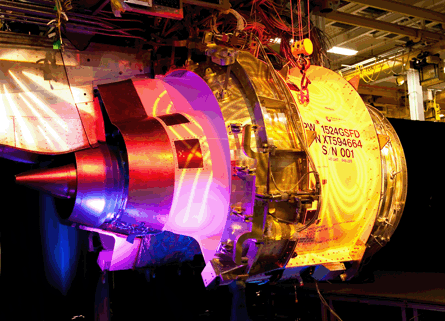With an eye to programmes yet announced by Airbus, Boeing, Embraer and Gulfstream, Pratt & Whitney faces a looming decision on its industrial footprint and how to meet the demand for future applications of its next-generation product family.
The engine maker late in August reached an important milestone when it completed assembly of the first of eight test engines for the initial variant of its PW1000G geared turbofan, the 24,000lb-thrust (107kN) PW1524G version that will power Bombardier's CSeries twinjet.
This is due to begin testing before the end of the year, which is also the target P&W has set itself to select the site for assembly of the PW1217G version that will power Mitsubishi's MRJ regional jet, the 70- to 90-seat aircraft that is due to debut in 2014. However, the facility has grown in scope beyond assembly of the 17,000lb-thrust powerplant.
P&W is producing the PW1524G test engines at its Middletown, Connecticut facility. Production engines for the CSeries, which is due for service entry in 2013, will either be partially or fully assembled at the company's new Mirabel, Quebec facility.
 |
|---|
© Pratt & Whitney/Rick Koehler |
"We're looking at what we do with the re-engining opportunities that we have from Boeing and Airbus, and you think of a potential Embraer application, and then you've got the corporate [aircraft] applications, you sit back and you say 'we can't just build in Connecticut and Mirabel'," says Bob Saia P&W vice-president, next-generation product family.
During its initial ramp-up between 2013 and 2016, Saia believes 400 PW1000G engines will be delivered. This tally reflects the three platforms from Mitsubishi, Bombardier and Irkut with its MS-21, for which P&W's geared architecture has been selected to power.
"There just isn't enough capacity," he says of the two facilities in Mirabel and Connecticut that will assemble the PW1524G and some PW800 engines (a non-geared engine that shares the PW1000G series core).
Those facilities are sized to handle 500-600 engines a year at peak output, he adds. "So the question is 'what makes sense?' Good location as well as a greenfield layout so you can really get productivity and value out of the operation."
Saia says the company has options for two or three sites across North America, Europe and Asia for the assembly site.
 |
|---|
© Pratt & Whitney/Rick Koehler |
While the new facility was initially intended to host production of the PW1217G for the MRJ, Saia says the prospect of additional applications for the smaller GTF engine are fast approaching, prompting P&W to increase the scope of its production infrastructure.
"We believe there will be more than one commercial jet application for an MRJ engine," says Saia. He believes the engine could find an additional applications on a "next-generation CRJ or next-generation Embraer product".
Pacing P&W's decision is the fact that Airbus, Boeing and Embraer intend to decide on future narrowbody products by the end of the year. The airframers generally have three options, with deliberations centring on re-engining their existing aircraft with next-generation powerplants, opting for clean-sheet design, or doing nothing.
Saia believes Airbus in particular will launch a re-engined A320 this year, although while he says the preferred method for offering a geared engine for the Airbus line continues to be through P&W's International Aero Engines partnership with Rolls-Royce, he says of the relationship "we have different technologies with different scopes, so when you start to go down that journey and it gets to a point where it's hard to bring them back together".
The relationship between the two engine makers was strained again in August, when R-R accused P&W of patent infringement on the design of the fan blades of the PW1000G and Engine Alliance GP7200 that powers the Airbus A380.
Although this suggests a growing rift between the two IAE partners, Saia says the prospect of partnering R-R on a powerplant for the A320 "New Engine Option" is "not dead", but adds that "the further you travel, the harder it is to return". The stakeholders are still talking to one another, but fundamental differences on architecture, and the investment already made by P&W, remain potentially irreconcilable differences, he says.
While it has not confirmed its final decision, a P&W or IAE option on the A320 is likely to be pitted against a CFM Leap-X design.
 |
|---|
© Pratt & Whitney/Spencer Sloan |
For Boeing, which exclusively offers the CFM56-7B engine for its existing 737 family, re-engining is far less of a certainty, says James Bell, Boeing's chief financial officer. Bell says that changes to the 737 airframe and added engine weight deliver a "single digit [fuel burn] improvement which we don't believe is something that our customers are interested in".
Additionally, Saia is bullish on the prospect of landing a launch customer for the non-geared PW800 engine, which had been selected to power Cessna's now defunct Columbus large business jet. "There's a lot of activity going on there," says Saia, adding that the lull in the business aircraft market forced by the global economic recession has given way to significant behind the scenes planning for future products.
Industry sources confirmed in April that P&W had planned to offer the PW800 against an offering from General Electric to power Gulfstream's rumoured all-new large-cabin G450/G550 replacement, code-named "P42". Gulfstream has not confirmed nor denied a clean-sheet programme even exists.
Source: Flight International













